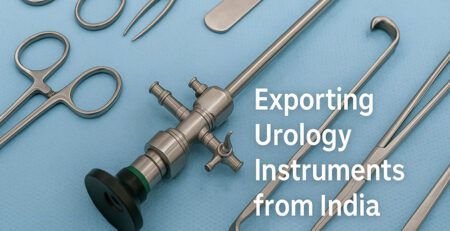Introduction
In today’s rapidly evolving healthcare industry, hospitals and clinics demand nothing short of excellence when it comes to medical devices. This is especially true for urology equipment, where precision, durability, and reliability can directly influence patient outcomes. Traditionally, many hospitals looked to Europe or the United States for such equipment, assuming Western brands set the gold standard.
But over the last decade, the story has started to change. Urology equipment manufacturers in India have made remarkable strides, closing the quality gap and even surpassing some international competitors in specific areas. By embracing global certifications, cutting-edge technology, strict quality controls, and cost efficiencies, these manufacturers are not only meeting global standards but also becoming trusted partners for healthcare facilities worldwide.
So, how exactly are Indian manufacturers competing on the world stage? Let’s take a closer look at the factors driving this transformation.
1. Adopting Global Certifications
For hospitals and international buyers, certifications aren’t just formalities—they’re proof of safety, reliability, and compliance with international laws. The leading urology equipment manufacturers in India have recognized this and prioritized certifications that make their products acceptable in global markets.
The three most crucial certifications include:
-
ISO 13485 Certification – This certification demonstrates that the manufacturer adheres to internationally recognized quality management systems for medical devices. It ensures every stage of production, from design to delivery, follows strict protocols to guarantee safety and performance.
-
CE Marking – Mandatory for selling in the European Union, the CE mark signifies compliance with European safety, health, and environmental requirements. Hospitals in Europe and other regions often require this before even considering procurement.
-
FDA Approvals – For Indian manufacturers eyeing North America, securing U.S. Food and Drug Administration (FDA) clearance is critical. It opens doors to one of the most regulated and lucrative markets in the world.
By securing these certifications, Indian manufacturers are not just proving compliance—they’re building trust with hospitals and clinics that demand internationally benchmarked products.
2. Advanced Manufacturing and Sterilization Practices
Another reason urology equipment manufacturers in India are winning global recognition is their investment in state-of-the-art production facilities. These facilities now employ:
-
Precision CNC machines and automated assembly lines to eliminate inconsistencies.
-
Cleanroom environments that meet international hygiene standards.
-
Stringent sterilization protocols, ensuring that instruments remain free from contaminants and are safe for use in sensitive procedures.
The result? Instruments that meet the durability, hygiene, and performance expectations of hospitals everywhere.
For example, manufacturers have adopted electropolishing and passivation processes for stainless steel instruments, enhancing their corrosion resistance and extending their lifespan—a detail global buyers look for when sourcing critical medical tools.
3. Investing in Innovation and Modern Technology
Global standards aren’t just about meeting today’s requirements; they’re also about anticipating future healthcare needs. Top urology equipment manufacturers in India are investing heavily in research and development (R&D) to stay ahead.
Some of the key innovations include:
-
Digital Integration – Instruments and devices are being designed to work seamlessly with digital imaging and surgical navigation systems, allowing for greater precision and better documentation of procedures.
-
Ergonomic Designs – Surgeons often spend hours in the operating room. Ergonomically designed instruments reduce fatigue, improve handling, and make surgeries more efficient.
-
Support for Minimally Invasive Procedures – With a global shift toward minimally invasive surgeries (MIS) to reduce recovery times and improve patient comfort, manufacturers are designing tools specifically tailored for these techniques.
This focus on innovation allows Indian manufacturers to compete not just on price, but on technology and usability, appealing to both domestic and international markets.
4. Competitive Pricing Without Sacrificing Quality
While quality is critical, pricing remains a significant factor for hospitals, especially in emerging markets or for government-run healthcare facilities. One of the key advantages Indian manufacturers bring to the table is their ability to balance affordability with high standards.
How do they achieve this without compromising on quality?
-
Lower production costs due to local sourcing and labor efficiencies.
-
Scalable manufacturing, which reduces per-unit costs for bulk orders.
-
Streamlined operations that eliminate unnecessary overhead while still maintaining strict quality controls.
For hospitals, this often means saving 30–50% compared to Western suppliers, while still receiving instruments that meet or exceed international quality benchmarks.
5. Building Strong After-Sales Support and Training Networks
Global standards aren’t just about the product—they’re about the entire experience. Leading urology equipment manufacturers in India understand that hospitals need more than tools; they need reliable partners who offer:
-
Comprehensive staff training, both on-site and virtually, to ensure medical teams use the instruments effectively.
-
Quick-response technical support to minimize downtime during critical procedures.
-
Spare parts availability for fast maintenance and repairs.
-
Annual Maintenance Contracts (AMCs) to keep equipment in optimal working condition.
This full-service approach helps hospitals reduce long-term costs, avoid delays, and maximize the lifespan of their investments.
6. Strengthening India’s Global Reputation
Thanks to these advancements, Indian urology equipment manufacturers have become highly sought-after globally. Many now export to over 50 countries, supplying not just private hospitals but also government health systems and international procurement agencies.
For example:
-
Some Indian manufacturers now supply instruments to Europe and the Middle East, regions traditionally dominated by Western brands.
-
Others collaborate with global distributors, offering white-label manufacturing services while maintaining quality control.
As trust in Indian-made medical devices grows, more hospitals worldwide are realizing they don’t need to pay a premium for Western brands to get top-quality tools.
FAQs: How Indian Urology Equipment Manufacturers Are Meeting Global Standards
1. Can Indian urology equipment match Western brands?
Yes. Many Indian manufacturers now use advanced technology, premium materials, and strict quality control, allowing them to compete directly with European and U.S. brands.
2. What certifications prove global quality?
The most important are ISO 13485, CE marking, and FDA approvals for markets like Europe and North America. These certifications confirm compliance with global safety and performance standards.
3. Are Indian-made instruments durable and reliable?
Absolutely. Leading manufacturers use high-grade stainless steel, precision engineering, and rigorous testing to ensure their instruments last as long as, or longer than, global alternatives.
4. Do these manufacturers offer training and after-sales support?
Yes. Most top companies provide training for medical staff, maintenance contracts, and international service teams to support hospitals worldwide.
5. How do their prices compare to Western suppliers?
Indian instruments are often 30–50% more affordable, primarily due to cost-effective manufacturing, while still meeting or exceeding global standards.
6. Why are more hospitals choosing Indian suppliers?
Because they deliver a winning combination of quality, innovation, affordability, and strong after-sales support, making them reliable partners for healthcare providers globally.













Leave a Reply